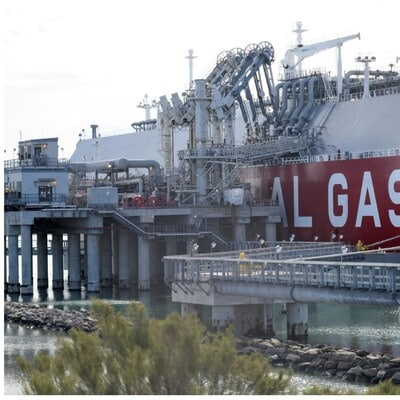Growth is set to slow to 5.6% in 2022 as supply shortages remain the main factor limiting growth.
) After two years of uncertainty, the global liquefied natural gas (LNG) market has found a new, uneasy equilibrium. Photo: Bloomberg Reuters
After two years of uncertainty, the global liquefied natural gas (LNG) market has found a new, uneasy equilibrium. Photo: Bloomberg Reuters
The global liquefied natural gas (LNG) market is in a new, precarious equilibrium after two years of uncertainty due to a short-term surplus of supply, the International Gas Union (IGU) said in a report on Wednesday.
Global LNG trade is expected to reach a record high of 401.42 million tonnes in 2023, up 2.1% (8.4 million tonnes) from the previous year, supported by increased spot purchases due to moderately lower prices.
Click here to connect with us on WhatsApp
However, growth was still expected to be lower than 5.6 percent in 2022 as supply shortages remain the main factor limiting growth, the IGU said in its World LNG report.
Why is this important?
LNG is widely recognised as a transition fuel on the path to net-zero emissions and plays a key role in helping countries, particularly in Asia, achieve their energy transition goals.
European Union countries have been scrambling to replace Russian fuels following Moscow's 2022 invasion of Ukraine, and LNG imports have played a key role in replacing a significant portion of Russian gas pipeline supplies.
IGU represents the global gas industry, with over 150 members in over 80 countries, covering more than 90% of the world's gas markets.
By the numbers
– In 2023, global LNG trade will connect 20 export markets and 51 import markets.
– Asia saw the biggest change, with net imports increasing by 10.49 million tonnes as lower prices encouraged spot buying.
– China imported 71.21 million tonnes of LNG, making it the world's largest LNG importer.
– Imports from Europe remained stable as a mild winter kept inventories high.
– Germany will import significant amounts of LNG for the first time in 2023, with volumes estimated at just over 5 million tonnes, up from 80,000 tonnes in 2022.
– The United States will remain the world's largest LNG exporter in 2023, with total exports reaching 84.5 million tonnes, up 8.9 million tonnes from the previous year.
– Australia came in second with 79.6 million tonnes of exports, followed by Qatar and Russia with 78.2 million tonnes and 31.4 million tonnes respectively.
Asia and Asia Pacific remain highly dependent on long-term imports at 68.9% and 69.5%, respectively.
Meanwhile, long-term purchases in Europe reached 46.4%, while spot purchases were at 48.4%.
Important Quotes
“The LNG market remains challenging despite lower prices.
“The new equilibrium in the global market remains fragile and vulnerable to uncertainties from both the demand and supply sides,” said IGU Chairman Li Yaran.
(Only the headline and photo of this report may have been modified by Business Standard staff. The rest of the content is auto-generated from a syndicated feed.)



